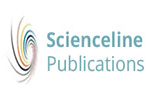(2024) Effects of Suture Implantation Using Different Suture Materials on the Skin Histopathology, Immune Expression of Interleukin-6, and Hematological Parameters in Rat. World's Veterinary Journal. pp. 97-103. ISSN 23224568
|
Text
WVJ14(1)97-103,2024.pdf - Published Version Download (568kB) |
Abstract
Suture implantation is a procedure to promote rearrangement of the extracellular matrix. Various cellular responses of post-suture implantation affect the outcome of this procedure. The current study aimed to analyze the effects of suture implantation using polycaprolactone/polylactic acid/hyaluronic acid (PCL/PLA/HA) on skin histopathology, expression of IL-6, and hematological parameters in rat models. To conduct the study, 25 male Sprague Dawley rats, three months old were randomly divided into five groups, including G1 (control), G2 (sham, group injected using skin cannula), and G3-G5 (suture implanted groups). For the suture-implanted groups, a cannula was used using suture materials. Specifically, G3 received truglyde implants, G4 received PCL/PLA/HA implants, and G5 received polydioxanone (PDO) implants. The back skin and blood samples were collected on day 3. Histopathological analysis was conducted on the samples using H and E, Congo red, immunohistochemistry against IL-6, and hematology. The analysis of the data revealed that the group with suture implantation using PCL/PLA/HA had the smallest wound area, compared to the other implanted groups. Further, the PCL/PLA/HA group showed a significant decrease in eosinophils infiltration and IL-6 level on the skin samples after suture implantation. Moreover, there were no significant differences across the groups in most of the hematological parameters after suture implantation, including total erythrocytes, hemoglobin, eosinophil, basophil, and monocyte levels. The total neutrophils increased after suture implantation in all groups, while the total lymphocytes decreased. It can be concluded that the best material according to parameters evaluated in the current study for suture implantation was PCL/PLA/HA. © The Author(s) 2024. All Rights Reserved.
| Item Type: | Article |
|---|---|
| Keywords: | hemoglobin; hyaluronic acid; interleukin 6; polycaprolactone; polylactic acid, animal cell; animal experiment; animal tissue; Article; basophil; controlled study; eosinophil; erythrocyte; hematological parameters; histopathology; immunohistochemistry; implantation; male; monocyte; nonhuman; protein expression; rat; skin; suture technique |
| Subjects: | S Agriculture > SF Animal culture |
| Divisions: | World's Veterinary Journal (WVJ) |
| Page Range: | pp. 97-103 |
| Journal or Publication Title: | World's Veterinary Journal |
| Journal Index: | Scopus |
| Volume: | 14 |
| Number: | 1 |
| Publisher: | Scienceline Publication |
| Identification Number: | https://doi.org/10.54203/scil.2024.wvj13 |
| ISSN: | 23224568 |
| Depositing User: | Dr. Alireza Sadeghi |
| URI: | http://eprints.science-line.com/id/eprint/1215 |
Actions (login required)
 |
View Item |


 Dimensions
Dimensions Dimensions
Dimensions